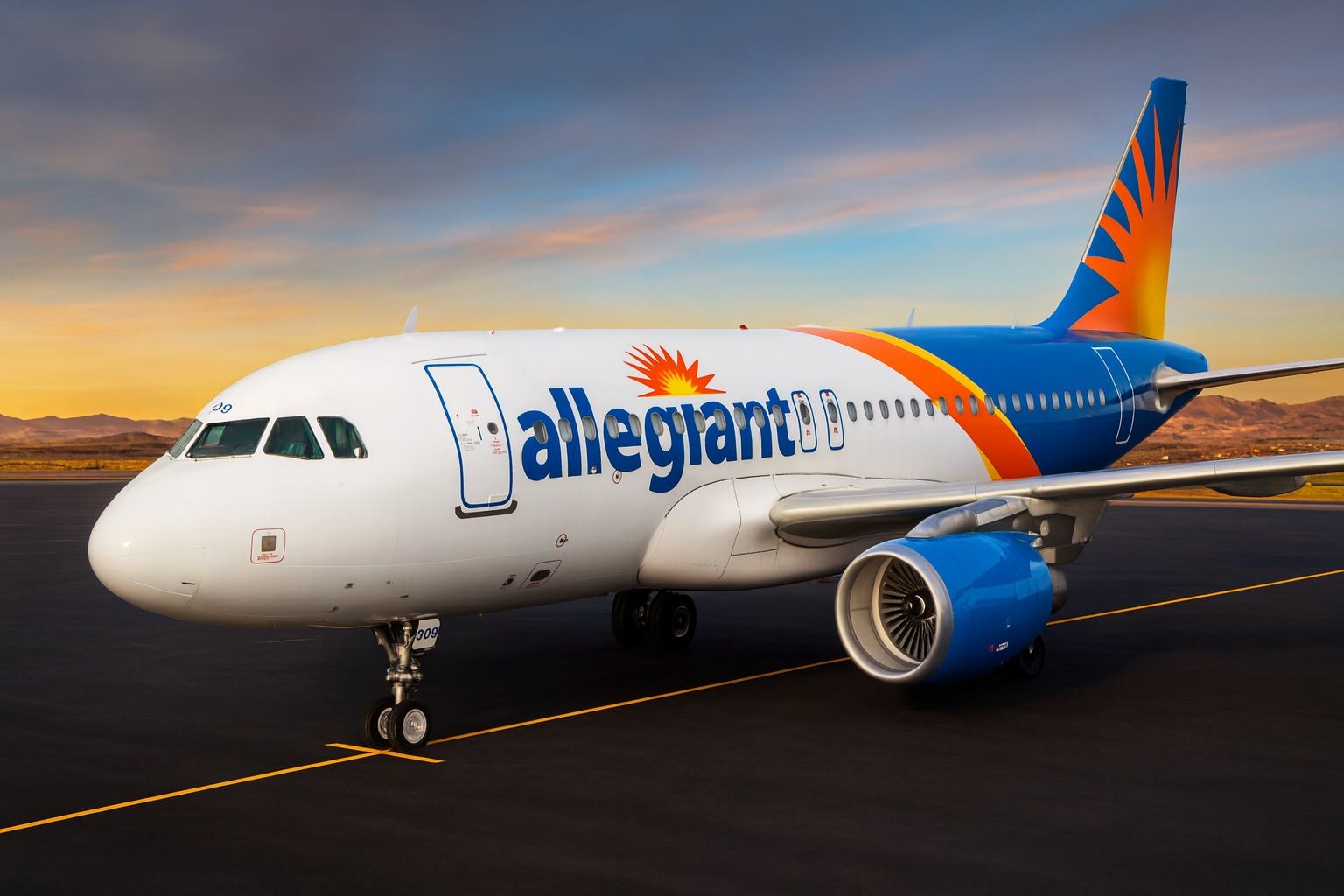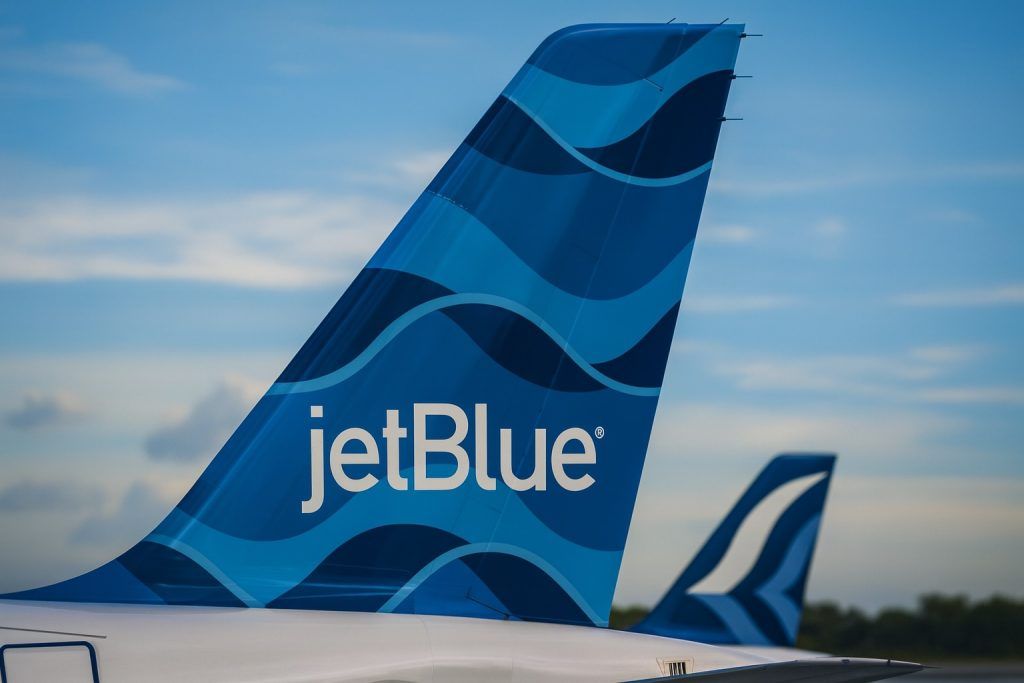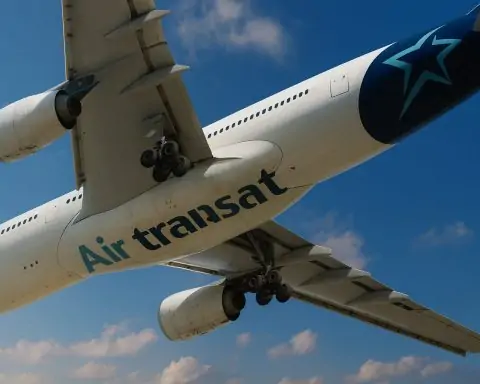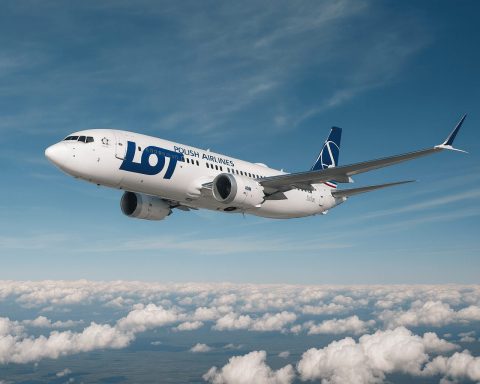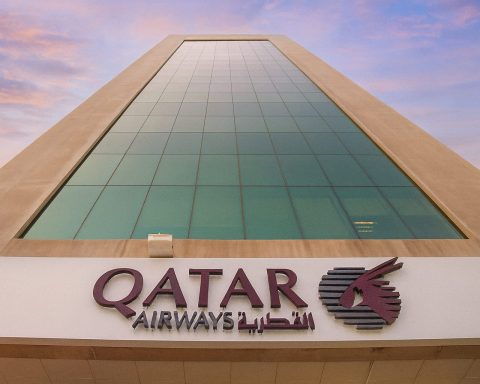- Allegiant’s Surge: August 2025 passengers rose ~12.6% year-over-year [1]. Allegiant’s Chief Commercial Officer Drew Wells said demand “remained solid” and “trends [are] outperforming our initial expectations” [2]. The carrier sees fuel costs stable and non-fuel expenses lower, guiding to a Q3 profit at the top of its range [3].
- Frontier Growth Spurt: Frontier launched 15 new routes in 6 days (Oct 7–12) across 17 airports, plus announced 3 more non-stops from Dallas-Fort Worth [4]. Frontier’s VP Josh Flyr said the new routes “provide more low-cost options” and timed with the holiday season [5]. CEO Barry Biffle emphasized that Frontier targets budget travelers, filling the niche for “a lower price” from DFW [6].
- Robust Travel Market: Overall U.S. leisure travel remains strong – domestic leisure travel spending is forecast to grow ~1.9% in 2025, as Americans “continue to prioritize travel” [7], even while international visitors decline. Delta’s CEO Ed Bastian observed an industry-wide “structural change” as airlines pull back capacity [8]. With fewer seats chasing high demand, carriers are raising fares. Delta, for example, reported record Q3 results and says it’s “well-positioned” for a record holiday season [9] [10].
- Stock Watch: Airline stocks have rallied with the boom. As of Oct 12, Allegiant (ALGT) traded around $58.75 [11] (vs. ~$61 on Oct 10 [12]), with analysts’ 12-month target ~$67.7 (≈+15% upside) [13]. Frontier (ULCC) shares were about $3.95 [14] after slipping from ~$4.14. (For comparison, legacy carriers also jumped on Delta’s strong earnings news [15].)
- Analyst Outlook: Experts note many budget carriers are trying to add premium services. Reuters quotes analyst John Grant (OAG) questioning whether any ULCC has successfully “repositioned itself up in the value chain” [16]. Travel consultant OAG warns that adding first-class seats adds complexity. Meanwhile, Senate hearings loom: Frontier’s Biffle recently urged regulators to “unlock more gates” for budget airlines.
Strong Demand Lifts Budget Carriers
Despite economic worries, travel bookings are robust. U.S. travel forecasts show domestic leisure spending rising about 1.9% in 2025 [17]. According to the U.S. Travel Association, Americans have “continued to prioritize travel” even with inflation concerns [18]. Major carriers report booming bookings, especially for premium seats and long-haul routes. For example, Delta and United see surging business and first-class travel [19] [20]. As Delta’s management noted, a six-week spike in corporate travel has finally returned [21].
This demand surge has coincided with a pullback in capacity. Spirit Airlines recently filed for bankruptcy and is slashing its fleet [22]. With the ULCC downsize and legacy airlines moderating growth, supply is tight. Delta CEO Ed Bastian summed it up: “Structural change has taken hold across the industry,” as airlines have cut unprofitable flying [23]. This tighter supply has driven up fares – Delta raised unit revenues in Q3 after a prior decline [24] – and executives expect it to continue through year-end.
However, not all segments are equally strong. American Airlines CEO Robert Isom recently acknowledged U.S. demand was “under stress” among budget-conscious travelers [25]. Indeed, industry data show full-service carriers are disproportionately benefiting: legacy airlines’ basic economy and premium cabins are taking market share. As OAG’s John Grant points out, major carriers now fight for budget flyers with basic fares, squeezing pure ULCCs [26] [27]. Nonetheless, analysts generally expect the industry to see a strong holiday quarter, with Delta forecasting record Q4 earnings and unit revenues remaining positive [28] [29].
Allegiant’s Traffic Growth & Outlook
Allegiant (NASDAQ: ALGT), the Las Vegas–based ULCC, reported a 12.6% jump in August scheduled service passengers (1.495 million vs. 1.328 million a year earlier) [30]. Available seat-miles (capacity) grew even faster (+14.6%), so load factor dipped slightly, but Wells noted resilient demand across the network [31] [32]. CFO Robert Neal said August fuel costs were in line with guidance (~$2.55/gal) and that “non-fuel costs have trended better than expected”, leading Allegiant to end Q3 at the top of its margin and EPS targets [33].
Allegiant’s execs emphasize value pricing. The carrier focuses on smaller cities, offering base fares often <50% of the industry average [34]. Its model relies heavily on ancillary fees. (By industry definition, ULCCs “sell tickets that cover only the seat and the flight…anything beyond that…comes with an extra fee” [35].) The strong passenger growth suggests Allegiant is filling planes even with a stripped-down service model. Management’s upbeat comments – demand “outperforming…expectations” [36] – and favorable costs have the street optimistic: as of mid-Oct, analysts rate ALGT a “Neutral” with a 12-month consensus target of ~$67 (implying ~15% upside) [37]. However, investors also note Allegiant carries sizable debt (debt/equity ~~170% [38]) and faces seasonal volatility.
Frontier’s Rapid Network Expansion
Frontier Group Holdings (NASDAQ: ULCC), also a ULCC, is aggressively growing its network. In just the past week (Oct 7–12), Frontier launched 15 new routes (mostly domestic) across 17 cities. This follows earlier announcements of new service from its hubs (e.g. Denver, Atlanta) to leisure destinations. Notably, on Oct 8 Frontier added three new non-stop routes from DFW – to El Paso, Charleston (SC), and Tucson – with fares starting as low as $29 [39]. Company officials stressed the move strengthens Frontier’s appeal: “With the holiday and winter travel seasons just around the corner, now is the perfect time for consumers to plan their travel with America’s low-fare airline,” said Josh Flyr [40].
This expansion is strategic. As Dallas Morning News reports, Frontier has quickly become the second-largest carrier at DFW by seat share, overtaking Delta and United on certain markets [41]. CEO Barry Biffle frames Frontier as the obvious choice for cost-sensitive travelers: “For budget travel from DFW, we fill that niche. We see ourselves as a great alternative for folks that need a lower price,” he said [42]. Frontier’s plan includes both point-to-point leisure routes and more domestic connectivity. For example, it also announced a return to Tulsa with a new Denver link, part of the same multi-route expansion strategy [43] [44].
Frontier, like Allegiant, touts rock-bottom fares offset by fees. It even recently added “first-class-style” seating and loyalty perks to woo customers [45]. But industry analysts caution this premium pivot carries risks. As Reuters noted, Frontier (and Spirit) have reported widening losses (Frontier lost ~$70M in Q2) as they tried to move upmarket [46]. Still, Frontier’s CEO has been vocal about competition: at a Senate hearing he blasted locked gates and subsidy-based basic fares of the majors. For now, investors are watching whether Frontier’s ultra-low-cost model (with or without some plush seats) can capture enough market share.
Industry Context: Pricing Power & Caution
The broad airline industry is benefiting from pricing power. With Spirit cutting capacity and many carriers pausing fleet growth, ticket prices are up. Reuters reports Delta and others “sharp[ly]” cut domestic capacity, boosting unit revenues [47]. Delta’s premium cabins hit ~43% of its revenue [48] as leisure and corporate flyers upgrade. This dynamic favours network carriers and ULCCs on uncontested routes. Breeze Airways CEO David Neeleman told Reuters that niche ULCCs (like Allegiant) are making money by operating nonstop routes with no competition [49].
However, cost pressures and competition still bite. Spirit’s recent collapse is a cautionary tale. After filing for Chapter 11 in October, Spirit’s CFO bluntly explained that “industry overcapacity among low-cost carriers combined with low passenger demand…led the company to bankruptcy” [50]. Frontier’s expenses are also high (debt levels jumped post-merger [51]), and consumer wariness of extra fees is a brand challenge. (Both Spirit and Frontier ranked last in J.D. Power surveys this year.) OAG’s John Grant warns that adding amenities can backfire: “Has any airline repositioning itself up in the value chain succeeded and survived?” [52].
In the near term, however, the sector’s momentum is clear. Airline CEOs (from Delta to Allegiant) report staying power in bookings and fares into the holidays [53] [54]. For instance, Delta forecasts record Q4 unit revenue and earnings (guidance $1.60–$1.90/sh) [55]. American, long a laggard, saw its stock jump on these bullish signals [56]. The key uncertainties remain: rising labor costs, fuel price volatility, and external shocks (like the U.S. government shutdown causing 13,000+ flight delays [57] [58]). But overall, industry experts expect strong end-of-year travel demand.
Market Snapshot & Forecast
By the numbers, Allegiant (ALGT) and Frontier (ULCC) remain small-caps with distinct profiles. Allegiant’s market cap is around $1.14 billion with a forward P/E ~23.5× [59]. Frontier’s market cap (~$0.90 billion) is smaller, and it’s currently unprofitable (negative P/E) [60]. Both have slid from 2021 highs but have solidly outperformed bankrupt Spirit. Analyst consensus sees modest upside: Allegiant’s consensus 12-month target is ~$67.7 [61], Frontier has a similarly cautious outlook.
Looking ahead, travel analysts forecast a strong holiday season. Major airlines are guiding to positive growth – for example, Delta predicts Oct–Dec revenue up ~2–4% [62] – and legacy carriers are reintroducing shareholder dividends. For ULCCs, continued cost control and capitalizing on underserved routes will be crucial. As Allegiant’s CFO Neal notes, falling costs and higher revenue (from fuller planes and fees) should keep margins at the high end of forecasts [63]. If the travel surge endures, ULCC earnings could improve significantly in 2026.
Sources: Official reports and press releases for Allegiant and Frontier (Sept/Oct 2025) [64] [65]; Dallas Morning News [66]; Reuters aviation reports [67] [68] [69]; industry analysis (TechStock²) [70] [71]; market data (investing.com, Reuters) [72] [73]; and U.S. Travel Association forecasts [74].
References
1. www.prnewswire.com, 2. www.prnewswire.com, 3. www.prnewswire.com, 4. www.dallasnews.com, 5. www.dallasnews.com, 6. www.dallasnews.com, 7. www.ustravel.org, 8. www.reuters.com, 9. www.reuters.com, 10. ts2.tech, 11. www.investing.com, 12. www.reuters.com, 13. www.investing.com, 14. www.reuters.com, 15. ts2.tech, 16. www.reuters.com, 17. www.ustravel.org, 18. www.ustravel.org, 19. ts2.tech, 20. www.reuters.com, 21. ts2.tech, 22. ts2.tech, 23. www.reuters.com, 24. www.reuters.com, 25. ts2.tech, 26. www.reuters.com, 27. www.reuters.com, 28. www.reuters.com, 29. ts2.tech, 30. www.prnewswire.com, 31. www.prnewswire.com, 32. www.prnewswire.com, 33. www.prnewswire.com, 34. www.prnewswire.com, 35. www.flightradar24.com, 36. www.prnewswire.com, 37. www.investing.com, 38. www.reuters.com, 39. www.dallasnews.com, 40. www.dallasnews.com, 41. www.dallasnews.com, 42. www.dallasnews.com, 43. www.instagram.com, 44. simpleflying.com, 45. www.reuters.com, 46. www.reuters.com, 47. www.reuters.com, 48. www.reuters.com, 49. www.reuters.com, 50. ts2.tech, 51. www.reuters.com, 52. www.reuters.com, 53. www.prnewswire.com, 54. www.reuters.com, 55. www.reuters.com, 56. ts2.tech, 57. www.reuters.com, 58. ts2.tech, 59. www.reuters.com, 60. www.reuters.com, 61. www.investing.com, 62. ts2.tech, 63. www.prnewswire.com, 64. www.prnewswire.com, 65. www.dallasnews.com, 66. www.dallasnews.com, 67. www.reuters.com, 68. www.reuters.com, 69. ts2.tech, 70. ts2.tech, 71. ts2.tech, 72. www.investing.com, 73. www.reuters.com, 74. www.ustravel.org
